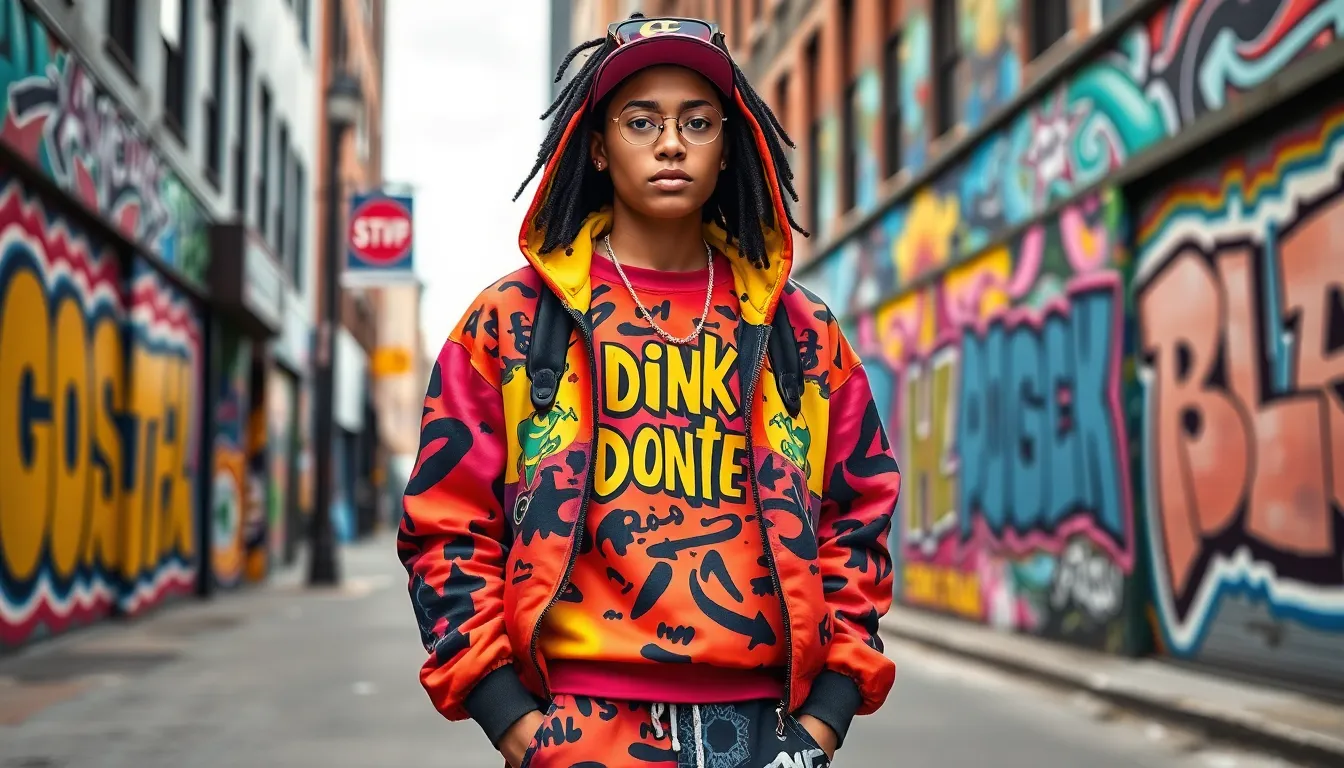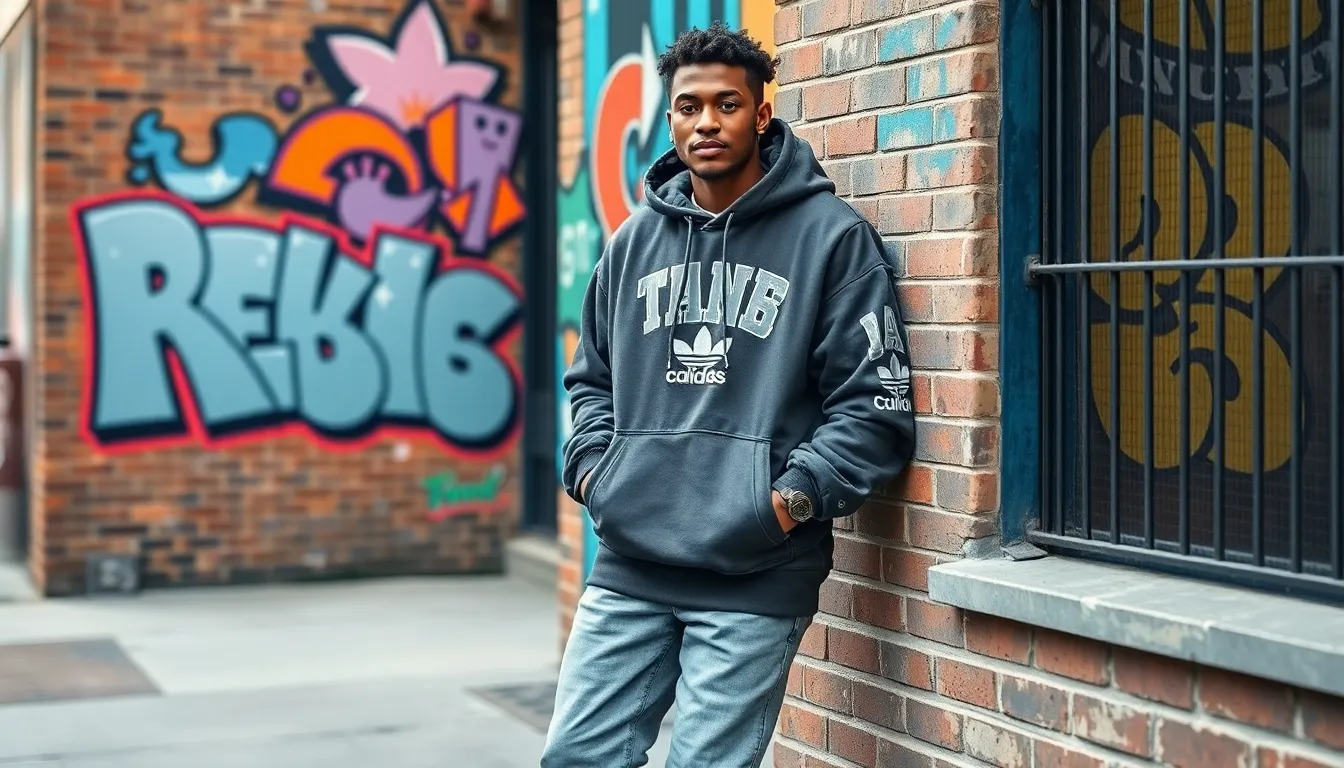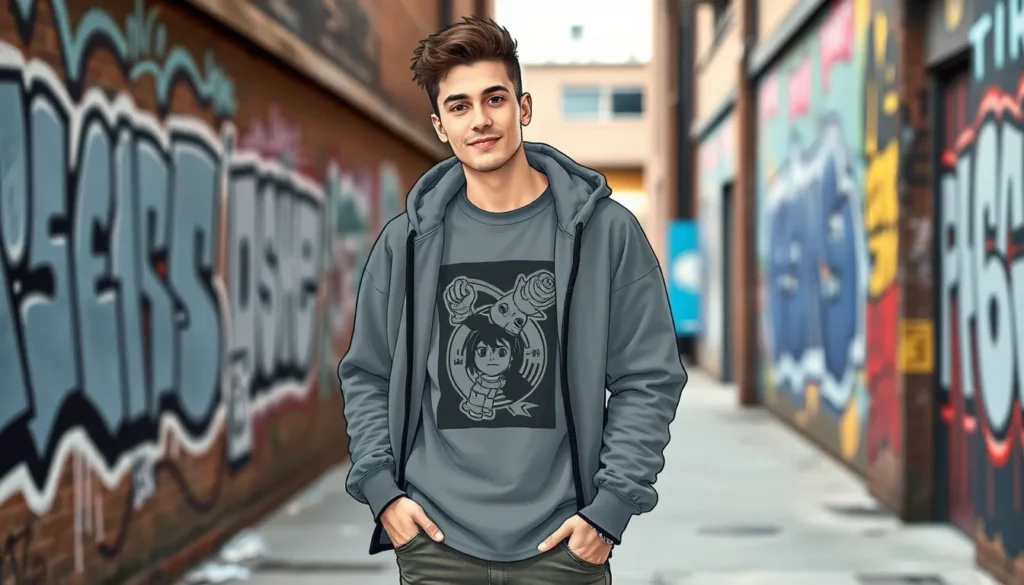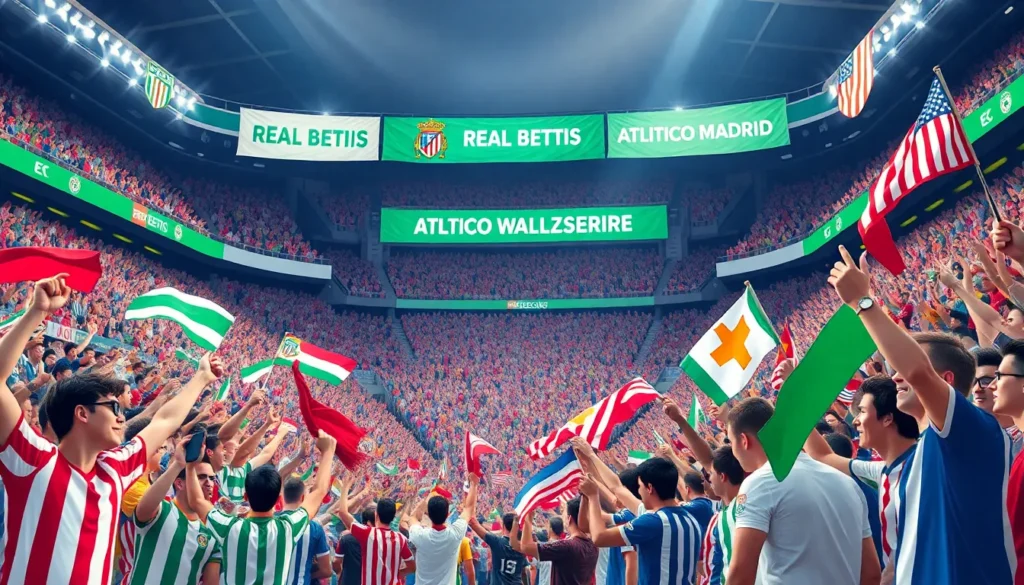Streetwear design isn’t just a trend; it’s a cultural phenomenon that’s taken the fashion world by storm. Imagine a style that effortlessly blends comfort with bold statements, allowing anyone to express their individuality while looking effortlessly cool. From oversized hoodies to graphic tees, streetwear has transformed the way people think about fashion, making it accessible and relatable.
Table of Contents
ToggleOverview of Streetwear Design
Streetwear design emerged as a pivotal player in the fashion industry, reshaping cultural landscapes. This style blends casual clothing with artistic elements, attracting a diverse audience. Graphic tees, oversized hoodies, and sneakers form the backbone of streetwear. Each item serves as a canvas for creative expression.
Individual brands often draw inspiration from urban culture, music, and art, reflecting the roots of streetwear. Iconic names like Supreme and Off-White lead the charge, known for their unique graphics and limited releases. Their influence extends beyond clothing, impacting lifestyle and youth culture.
Communities surround streetwear, with enthusiasts sharing their passion through social media and events. Collaboration plays a significant role, with brands teaming up with artists and designers. These partnerships often create buzz and drive demand, showcasing the fluid nature of streetwear.
Innovation remains vital in this space. Sustainable practices have become increasingly important as brands respond to consumer demands for eco-friendly options. Additionally, technology influences design trends, with digital prints and smart fabrics emerging in collections.
Streetwear encourages self-expression, allowing individuals to curate looks that resonate with their personal identities. As fashion becomes more inclusive, streetwear continues to break barriers, making style accessible for all. Its adaptability ensures that it remains relevant in an ever-changing industry landscape.
Key Elements of Streetwear Design

Streetwear design revolves around distinctive features that define its aesthetic. Two key elements include graphics and typography, as well as fabric and material choices.
Graphics and Typography
Graphics and typography play crucial roles in streetwear. Bold designs often feature in graphics, conveying messages or cultural references. Unique fonts attract attention, enhancing brand identity. Streetwear brands like Supreme frequently incorporate slogans that resonate with their audience, promoting a sense of community. Artistic collaborations also enhance visuals, bringing fresh perspectives into play. Customization drives individuality, allowing wearers to express personal style through distinct design elements.
Fabric and Material Choices
Fabric and material choices significantly impact the streetwear experience. Comfort and functionality take precedence when selecting textiles. Popular options include cotton, fleece, and synthetic blends, each offering unique attributes. Technical materials, such as moisture-wicking fabrics, contribute to performance wearability. Sustainability emerges as a core principle, with brands increasingly embracing eco-friendly materials. Innovative textile treatments also create new aesthetics, pushing the boundaries of conventional streetwear design.
Influential Streetwear Designers
Streetwear design thrives on the creativity of influential designers who shape its landscape. Established brands and emerging designers play critical roles in this dynamic culture.
Established Brands
Supreme stands out as a pioneering brand that transformed streetwear into a coveted lifestyle. Off-White, founded by Virgil Abloh, blends luxury with urban aesthetics, inspiring countless enthusiasts. A Bathing Ape (BAPE) popularized streetwear in Japan and remains influential worldwide. Stüssy, known for its surf and skate roots, continues to impact youth culture. DSQUARED2 merges high fashion with street style, appealing to fashion-savvy consumers. Each of these brands contributes to the evolution of streetwear through iconic designs and strategic collaborations.
Emerging Designers
Emerging designers inject fresh perspectives into streetwear. Fear of God, founded by Jerry Lorenzo, emphasizes luxury with a minimalist approach. Pyer Moss, led by Kerby Jean-Raymond, focuses on cultural narratives and social causes, resonating with a broad audience. Telfar, renowned for its inclusive philosophy, creates accessible and stylish pieces. A-COLD-WALL*, under Samuel Ross, bridges fashion with street activism, encouraging conversations around socio-political issues. These designers demonstrate innovation and creativity, shaping the future of streetwear with their unique visions.
Cultural Impact of Streetwear Design
Streetwear design significantly influences various cultural dimensions, impacting fashion, music, and art. Accessibility marks a critical shift; many individuals now engage with fashion that reflects their personal narratives instead of adhering to traditional styles.
Youth culture finds a voice through streetwear, fostering community and connection. Social media acts as a crucial platform where enthusiasts share their styles and preferences. Collaborative efforts between streetwear brands and artists often generate buzz, enhancing cultural relevance.
Brands like Supreme and Off-White transcend mere clothing lines, positioning themselves as cultural symbols. Their limited releases create a sense of urgency and exclusivity, further solidifying their status among trendsetters. These brands frequently leverage unique graphics and typography to convey messages that resonate with their audience.
Diversity in design stands out. Designers such as Fear of God and Telfar challenge norms, emphasizing inclusivity and socio-political themes. Small designers often emerge from local communities, infusing streetwear with regional narratives and perspectives.
Sustainable practices play a pivotal role in shaping streetwear’s future. Eco-conscious materials and innovative production methods appeal to consumers’ growing environmental awareness. This shift indicates a broader cultural push towards responsibility in fashion.
Innovative collaborations also extend beyond clothing. They incorporate technology and artistic expressions, creating cross-disciplinary dialogues. This approach contributes to a vibrant cultural landscape, where streetwear continues to evolve and impact societal norms.
Artistic expression thrives, with streetwear serving as a canvas for individuality. Designers and consumers alike embrace a culture that celebrates self-expression and creativity, ensuring streetwear remains a dynamic force in the fashion industry.
Future Trends in Streetwear Design
Sustainability remains a focal point for the future of streetwear design. Brands increasingly adopt eco-friendly materials like organic cotton and recycled polyester, reflecting a commitment to environmental protection. Innovations in textile technology enhance functionality and breathability, appealing to consumers’ demand for performance.
Digital integrations reshape shopping experiences in streetwear. Augmented reality and virtual try-ons become commonplace, providing consumers with interactive experiences. Customization options thrived, allowing individuals to personalize their apparel through unique graphics and styles, further reinforcing personal identity.
Inclusivity plays a vital role in shaping future designs. Emerging brands prioritize diverse sizing, ensuring accessibility for all body types. Cultural narratives are woven into collections, reflecting various backgrounds and experiences, creating a more relatable atmosphere within the community.
Collaboration remains a driving force behind streetwear growth. Partnerships between high-fashion designers and streetwear brands captivate audiences and expand market reach. New collaborations often emphasize artistic expressions, leading to the creation of limited-edition pieces that spark excitement.
Technological advances contribute significantly to trends in streetwear. Smart fabrics that adapt to temperature and moisture levels enhance comfort. Wearable tech integrates seamlessly into clothing, offering functionalities like tracking fitness metrics while maintaining streetwear aesthetics.
Graphics continue to push boundaries, becoming more dynamic. Designers experiment with bold imagery and interactive elements that engage audiences visually and conceptually. Typography evolves, with varied styles reflecting personal expression and cultural influences, helping brands convey their unique narratives.
Community dynamics shift as digital platforms grow. Virtual fashion shows and online events connect global audiences, allowing brands to showcase their latest designs instantly. Engagement with young consumers through social media remains essential, fueling interest and brand loyalty.
Conclusion
Streetwear design continues to redefine the fashion landscape by blending comfort with bold self-expression. Its impact transcends clothing, influencing music, art, and cultural narratives while fostering community among diverse audiences. As sustainability and innovation take center stage, brands are adapting to meet the evolving needs of consumers.
With a focus on inclusivity and customization, streetwear empowers individuals to express their unique identities. The dynamic nature of this genre ensures it remains relevant in an ever-changing industry. As streetwear evolves, it will undoubtedly continue to inspire creativity and individuality, solidifying its place in contemporary culture.








